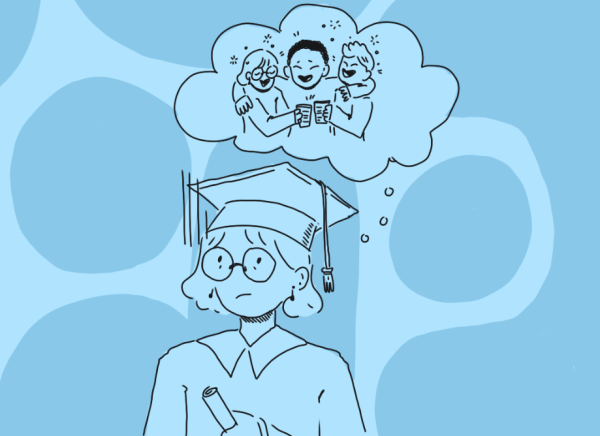Portal uses fans’ help for second release
May 10, 2011
Portal 2 was released April 19 with a big surprise — the release times was in the hands of the… Portal 2 was released April 19 with a big surprise — the release times was in the hands of the players.
Valve Corp., the company that developed the series, hosted an event that included independently produced games. The more hours played on those games, the faster “Portal 2” became available. It could have been released up to a day or two days earlier than its set release. Players managed to get it released a few hours early.
This is in line with Portal’s modest start as a student project. It gradually won the hearts of underground gamers and its popularity grew with the help of Internet denizens clamoring, “the cake is a lie.” Now, what began as a gamer cult-classic has become a wildly popular mainstream puzzle game. The release of the sequel had fanboys and fangirls gripping the edge of their seats, and it did not disappoint.
The Portal series combines complicated game-spaces and characters with a puzzle-game platform that creates a narrative so thought-provoking that the first game is a required text for the Pitt course “Narrative and Technology.”
If you’re familiar with the ending of the original game, it might be difficult to imagine a sequel, but Portal 2 absolutely delivers. The cleverness and ingenuity of the original continue in the second installment, bringing out the themes of insanity and corruption of power present in the original.
A big change to this sequel is the addition of the cooperative mode. Players can join friends and others online to play as two droids, Atlas and P-body, who each have portal guns and must work together to solve test chambers — in-game challenges.
Though the increasing popularity of Portal does demonstrate that it is successful as both a narrative and a game — its latter role being the more obvious — the story itself is compelling when given a second glance. The game is extremely intellectual and clever and has developed fans who amuse themselves by reciting inside jokes such as “the cake is a lie.”
In the original Portal, the player learns about the Aperture Science Enrichment Center (where the player, as the character Chell, wakes up), previous test subjects, the Weighted Companion Cube and, most importantly, GLaDOS, the artificial intelligence unit in control of the Enrichment Center through the game space and narrative voice that guides the action.
GLaDOS is generally the conveyor of information. She explains the uses of the portal gun, provides essential information needed to complete some levels and explains certain aspects of the game’s physics.
Portal 2 is much heavier on the storyline than its predecessor, but this does not take away from gameplay in any way. Unlike the first game, in which the only characters are Chell — the player’s avatar — and GLaDOS, the second introduces the player to many new characters. One is Wheatley, an AI unit who wakes test subjects, and another is Cave Johnson, the deceased CEO of Aperture Science.
Just those few characters are so complex that it is difficult to provide simple labels to describe them and their roles.
GLaDOS maintains her information-conveying role, albeit bitterly after the events of the previous game. She still explains the game’s physics once again, as there are new objects and materials that the player encounters — such as walkways made from sunbeams and gels that cover objects and change how they react to other objects. Repulsion gel, for example, causes what it coats to bounce off of things.
Johnson fills the role of GLaDOS for some parts of the sequel. His character is as intriguing as GLaDOS’s was in the first. He also is not exactly what he initially appears to be. Any more elaboration would spoil the plot.
The game space has greatly changed since the original Portal — the facility has deteriorated without GLaDOS’s control. This makes the game difficult at some times because the clean, hospital-like test areas are dilapidated and disorganized now. Yet the disheveled and malfunctioning rooms makes for some great lines from GLaDOS. The bowels of the Aperture Science Enrichment Center are actually the main areas of action in the sequel, making it faster-paced and still visually stimulating.
Portal and Portal 2 are both great if you like thought-provoking, darkly hilarious games. See you in space.







